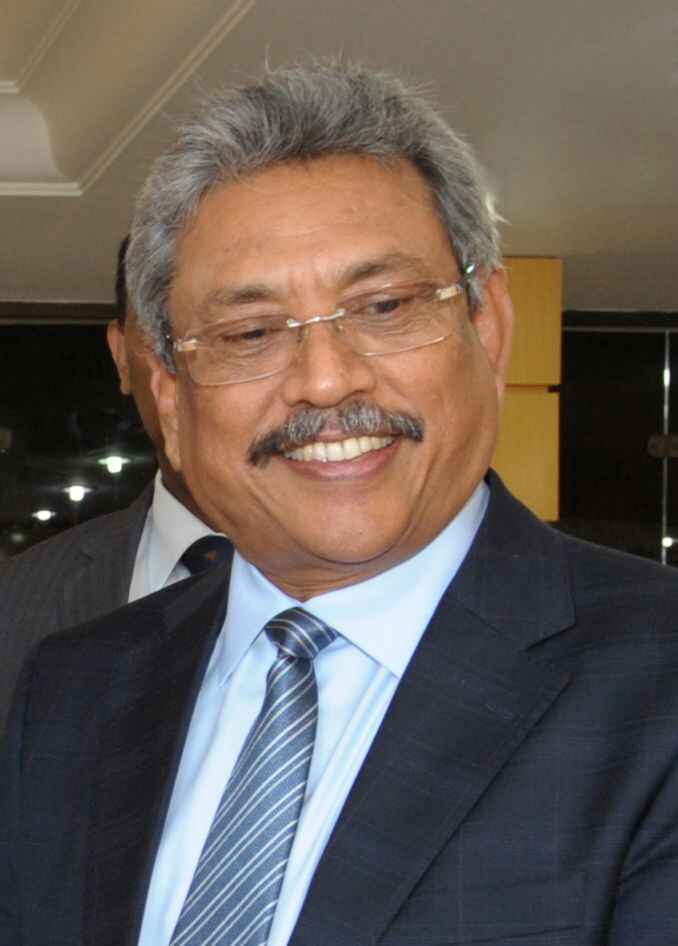
The massive protests across Sri Lanka since March and especially April 2022 are due to the worst economic and financial crisis since gaining independence from Britain in 1948. They are the fruit of the policies of the corrupt and incompetent Rajapaksa clan as well as bad choices by a majority of Sri Lankan voters. In the end, add to this mix bad luck aka the covid19-pandemic, which started on the island in March 2020, as well as the escalation of Putin’s war against Ukraine in February 2022.
Presidential elections were held in Sri Lanka on November 16, 2019. It was the first election in which no sitting president or prime minister was contesting for president. Turnout was 83.72%. Over 6,924,255 voters (52.25%) chose the former Lieutenant Colonel Gotabaya Rajapaksa (*1949) of the infamous clan of politicians, representing the SLPP party and the SLPFA alliance, over Sajith Premadasa, representing the UNP party and the NDF alliance, who ended up with 5,564,239 votes (41.99%).
In the August 5, 2020 parliamentary lection, Sri Lankan voters confirmed their choice. Amidst the covid19-pandemic, 75.89% of voters went to the polls. The SLPFA party led by Mahinda Rajapaksa (*1945) won 59.09% or 145 of the the 225 seats in the Parliament of Sri Lanka. The SLPFA was led the brother of the sitting president, Mahinda Rjapaksa, himself a former president, prime minister and, at the time of the election, finance minister (2005-2015 and 2019-2021); Mahinda became PM again after the election. The main opposition party SJB was led by Sajith Premadasa. The SJB ended up with 23.90% and only 54 seats in the 2020 parliamentary election. The UNP was split over the party leadership and ended up with 1 seat.
Therefore, a majority of voters is co-responsible for the current economic and financial crisis. President Gotabaya Rajapaksa and his government led by his brother Mahinda Rajapaksa wanted to impose organic farming on the island — a goal shared by many; it was also a way for the government to cut imports (of chemical fertilizers). The result: for instance reduced production of rice (which now has to be imported) and tea, the latter being the country’s key export good after textiles and garments. The government also reduced taxes, including VAT and corporate taxes, and the Central Bank began printing money. The pandemic hit the other major resources of Sri Lankan income: tourism as well as money transfers sent home to the island by Sri Lankan migrant workers. In addition, the pandemic hit supply chains and production, leading to inflation. According to a BBC report, prices for medicine went up 40%.
Not only prices for medicine went up, but also for fuel and cooking gas, for rice and milk powder; food prices are up to 30% in comparison with April 2021. In short, inflation, supply chain problems, corruption, incompetence, the pandemic, etc. are the perfect ingredients for famine, protests, riots, political unrest. 2022: the perfect storm?
The current crisis is also due to the long-standing mismanagement of Sri Lankan finances. Imports have been growing since 2009 while export income has not improved. The pandemic and Putin’s war made things worse; Russia is Sri Lanka’s second largest tea export market. Already in January 2022, because of foreign currency shortages, Sri Lanka was forced to pay oil imports from Iran with tea.
Since March 2022, the Sri Lankan rupee lost over 30% of its value against the dollar. The lack of foreign exchange reserves led the government to restrict or even ban the import of some goods. Daily power cuts are normal because of fuel, gas and electricity shortages.
Despite restrictive policies, the government could not avoid talks about Sri Lankan default in April 2022. Foreign debt soared from 42% of GDP in 2019 to around 115% in 2022 The government has temporarily suspended the servicing of its foreign debt and has been forced to formulate a request for emergency financial help from the IMF. Sri Lanka has to repay $7 billion in foreign debt in 2022, but its foreign currency reserves stand at less $1 billion. De facto default is unavoidable (without international help). A first since Sri Lanka’s independence in 1948.
On April 29, 2022 President Gotabaya Rajapaksa final agreed to replace his older brother Mahinda as prime minister. Let’s not forget that former president Mahinda Rajapaksa had led the Sri Lankan Armed Forces to the military defeat of the Tamil Tigers, which ended the Sri Lankan Civil War (1983-2009). The victory came with a brutal price: massacres with thousands of victims.
The current economic and financial crisis allows the impossible: the union of rich, poor and the middle class, of people living in the city and in the countryside as well as of people of different faith (a key factor in the civil war) against the corrupt and incompetent president and government. Even if the Rajapaksa clan should completely lose power, the next government will have to face extremely difficult tasks which could lead to further unrest as well as politicial, economic and social instability. Higher taxes may be unavoidable. The pandemic, supply chain crisis and Putin’s war are far from over.
The protests in Sri Lanka will surely not remain the exception. This island will not remain the only poor country victim of all the above, including inflation, even famine, Putin’s war as well as partly ill-guided foreign investments by CCP China in infrastructure leading to additional financial problems.
Recommended book by Razeen Sally: Return to Sri Lanka. Travels in a Paradoxical Island. Juggernaut, October 2019, 386 pages. Order the book from Amazon.com, Amazon.co.uk, Amazon.de. Check our book review.

Photograph of now President, Lieutenant Colonel Nandasena Gotabaya Rajapaksa in January 15, 2014. Photograph copyright/source: Flickr via Wikimedia by Jorgé Cardoso, Ministério da Defesa. Licence CC BY-2.0.
Article added on May 2, 2022 at 19:08 Swiss time.